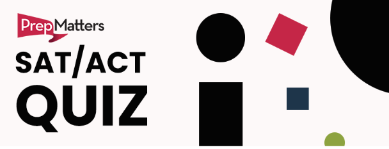Posted on: March 14, 2019
On June 14, College Board and ACT released an updated concordance between scores on the ACT and scores on the recently revised 2016 SAT. For a wonderfully detailed quantitative assessment, I strongly recommend you read the excellent post from Compass Prep. The changes to the concordance can be briefly summarized as follows:
- Higher scores (SAT 1260+/ACT 27+/~top 20% of testers) – the new concordance rewards most SAT testers in this range with one point higher equivalent ACT scores and saddles ACT testers with equivalent SAT scores that are 10 to 40 points lower.
- Average scores (SAT 1000-1250/ACT 19-26/~middle 40% of testers) – the new concordance delivers the same SAT or ACT score values for almost all students in this range.
- Lower scores (SAT 990 and under/ACT 18 and under/~bottom 20% of testers) – the new concordance has the opposite effect on the lower scores as compared to the higher scores: SAT testers in this range garner equivalent ACT scores that are typically one point lower and ACT testers gain equivalent SAT scores that are fewer than 100 points higher.
Having a new concordance based upon actual statistics and percentiles is undoubtedly a step forward for fairness. These are very different tests, and making any sort of concordance is difficult. If – as I like to say – the tests don’t really measure anything, they do surely measure different “nothings,” so the best way to compare the sets of students and scores is to match percentiles, which is what the new concordance tables actually do. That being said, I worry about the effects of publishing this concordance in June and the effects it might have on students who are either currently deciding which test to take or who are done with testing – or who thought they were done.
Moving Forward
Here’s some advice for students and families as they ponder the effects of these changes on their own circumstances. I’ll focus on the high-performing students here, since they are the ones who are hanging on every point and most likely to over-analyze and overreact to the new concordance.
Class of 2019: Almost all students have begun testing, and many have already finished. High-scoring SAT students are surely feeling better about their college admissions chances today, even as their ACT counterparts are likely wondering what they should do. I’d like to remind everyone that while standardized test scores are indeed a significant component of college admissions, they are certainly not the most important component. When I advise the highest-performing students about retaking the test to try to turn a 34 into a 35 or a 35 into a 36, I always remind them that they’ve already put themselves into the “very high test scores” category, and that their admissions decisions will likely come down to other factors. If they want to retest and give themselves another opportunity to have a good day, great; but if they’d rather call it a day, they’ve earned that right. I think that same advice should apply here. I don’t like to argue for any student’s limitations, so to those who plan on applying to the most selective schools and want to take advantage of a prefrontal cortex that’s six months more developed and give the ACT another go, I say go ahead. On the other hand, those who are considering switching from the ACT to the SAT are going to find a very different test for which all their hard work and preparation is less than perfectly transferable. I’d rather see those self-motivated students retake the ACT than try to reinvent the wheel on another test.
Class of 2020: It’s worth noting that about half of the students we see perform approximately equally well on the SAT as compared to the ACT. That’s a fact that will remain true, though the definition of equal is now more accurate than before. When my students take initial diagnostic tests, their first test results are usually “within the error bars” of each other. I don’t consider one ACT point either way to be a deal-breaker in deciding which test to pursue. What’s more helpful to consider, even in the light of the new concordance, is what was helpful last year: How was the testing experience? How was the timing? Which test does the student feel is a better match? Students who gravitate towards the ACT based upon their natural skills and inclinations shouldn’t shy away from it and attempt to swim upstream through murkier waters towards a goal that seems closer but actually might be farther away. Similarly, kids who like the SAT should take it because it’s a better match for their skills and not because they think some score chart will give them an advantage. The primary matchup to consider here is student vs. test and not test vs. test!
In summary, it may seem to some students that the College Board and the ACT have moved the goalposts on them here, but if that’s the case, they’ve really only been moved a few inches. I stand by the advice above, but all students should certainly take this opportunity to check in with their college counselors to understand how these changes might affect their individual applications to particular schools. In some cases, football can be a game of inches, and the same could also be said of college admissions.




